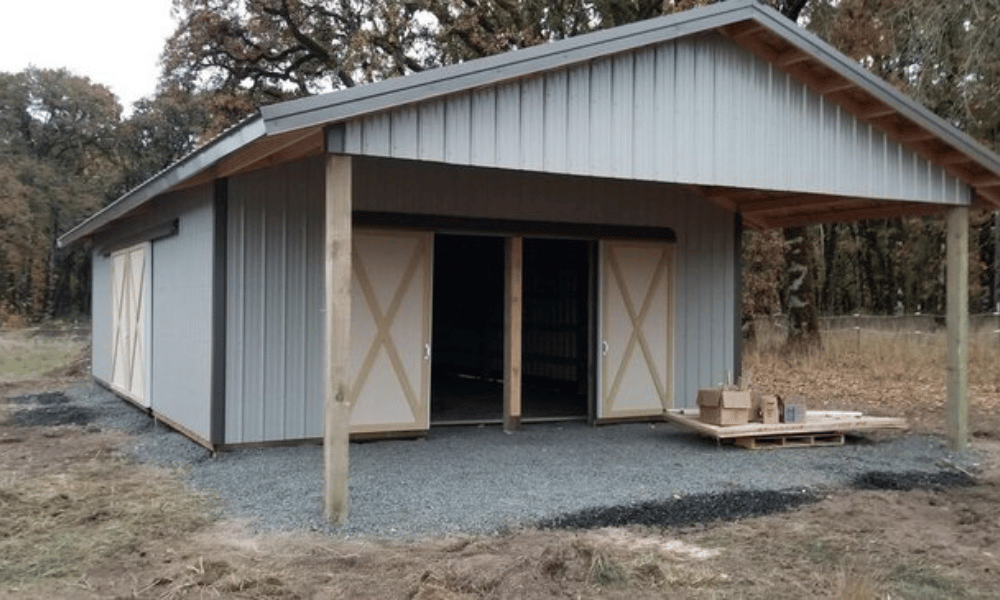Introduction
In today's fast-paced world, property owners face an ever-increasing need to future-proof their investments. As urban sprawl continues to blend with technological advancements, the choices we make in constructing our homes, garages, and other facilities become essential. Among these choices, pole buildings and traditional garages stand out as two popular options that promise durability and functionality. But how do you determine which one is right for you? In this article, we will explore both options thoroughly, diving deep into their features, benefits, costs, and long-term viability. So grab a cup of coffee and let’s embark on this enlightening journey of future-proofing your property!
Understanding Pole Buildings: An Overview
What Are Pole Buildings?
Pole buildings are structures where the primary support system consists of vertical poles or posts set into the ground. These buildings often feature a post-frame construction method that provides immense strength while allowing for large open spaces without the need for internal load-bearing walls.
The Benefits of Pole Buildings
Durability: One of the most significant advantages of pole buildings is their ability to withstand harsh weather conditions.
Cost-Effectiveness: Compared to traditional construction methods, pole buildings can be constructed more quickly and at a lower cost.
Versatility: These structures can serve multiple purposes—be it a workshop, garage, barn, or even storage space.
Minimal Foundation Requirements: Since pole buildings don’t require extensive foundations like traditional garages do, they can be built on various terrains.

Aesthetic Appeal: With various styles available—from rustic to modern—pole buildings can enhance your property's visual appeal.
Are There Any Drawbacks?
While pole buildings come with numerous benefits, there are some drawbacks to consider:
- Limited insulation options compared to traditional garages Potential zoning restrictions depending on local regulations
Traditional Garages: The Classic Choice
What Defines a Traditional Garage?
Traditional garages are typically framed structures that rely on concrete slabs and standard wall framing techniques for support. They often have a more conventional appearance compared to pole buildings.
Pros of Choosing Traditional Garages
Robust Insulation Options: Traditional garages allow for better insulation methods that keep your vehicles safe from extreme temperatures.
Variety in Designs: From attached to detached structures, traditional garages offer numerous design possibilities.
Enhanced Security Features: A conventional garage can provide better security options due to its solid construction materials.
Higher Resale Value: Many homebuyers prefer traditional designs over unconventional ones; hence they might fetch higher resale prices.
Cons of Traditional Garages
There are also drawbacks associated with traditional garages:
- Higher construction costs Longer building timelines
Comparative Analysis: Pole Buildings vs Traditional Garages
Cost Comparison Table: Building Your Future
| Feature | Pole Buildings | Traditional Garages | |----------------------|-----------------------------|-----------------------------| | Initial Cost | Lower | Higher | | Construction Time | Shorter | Longer | | Maintenance Costs | Generally lower | Can be higher | | Resale Value | Moderate | Generally higher |
Which Option Is More Durable?
When it comes to durability, pole buildings often outperform traditional garages due to their design and materials used in construction. They can handle heavy winds and snow loads effectively.
Aesthetic Appeal: Which Stands Out?
While both structures boast aesthetic value, pole buildings offer more flexibility in terms of customization—such as paint finishes and roof designs—allowing homeowners to create a unique look tailored to their preferences.
Future-Proofing Your Property: Pole Buildings vs Traditional Garages - Key Considerations
Climate Resilience: What Should You Know?
How does each structure hold up against extreme weather conditions?
- Pole Buildings: These structures excel in resisting harsh weather due to their sturdy yet flexible design. Traditional Garages: While robust, they may require additional reinforcements depending on local weather patterns.
Maintenance Needs: What’s Required?
Ongoing maintenance is vital for both types of structures but varies in scope:
Pole Buildings Maintenance Checklist:
- Regular inspections for pest infestations. Periodic checks on roofing materials.
Traditional Garage Maintenance Checklist:
- Monitor insulation integrity. Check door mechanisms regularly.
Long-Term Investment Potential: Which Is Better?
When considering long-term investment potential:
Pole Buildings: Given their lower initial investment and versatility, they provide excellent return opportunities for various uses.
Traditional Garages: Their permanence may appeal more to buyers looking for classic appearances but may come at a higher ongoing cost.
FAQs About Future-Proofing Your Property
What is the typical lifespan of a pole building? Pole buildings can last upwards of 30 years with proper maintenance but many remain functional for decades longer.
Are pole buildings suitable for residential use? Absolutely! Many homeowners use pole barns as workshops or storage spaces that complement their homes beautifully.
Can I insulate my pole building effectively? Yes! There are several insulation methods available specifically designed for post-frame constructions that maintain energy efficiency.
Do traditional garages require permits? Yes! Most municipalities require permits for constructing any new structure—including garages; check local regulations first!
What's the average cost difference between these two options? On average, initial costs for pole barns are around 20% lower than those of traditional garages—but costs can vary widely based on size and features selected!
Are there financing options available for either type of building? Yes! Many lenders offer financing solutions tailored toward construction projects; explore local banks or credit unions for personalized loans!
Conclusion
As we venture into an ever-evolving future filled with unknowns—being proactive about our property choices becomes paramount! Whether you choose the versatile charm of pole buildings or the classic resilience offered by traditional garages—the key lies in understanding your needs thoroughly before making any decisions. Both options have distinct advantages that cater http://miloabwa241.almoheet-travel.com/building-code-compliance-what-every-farmer-needs-to-know-about-pole-buildings brilliantly to different lifestyles and aspirations—so weigh them carefully!
Remember that future-proofing isn’t just about durability; it's about creating spaces that reflect who you are while serving your needs seamlessly over time! Ultimately, whichever path you choose will shape not only your property but also your life within it—for years to come!